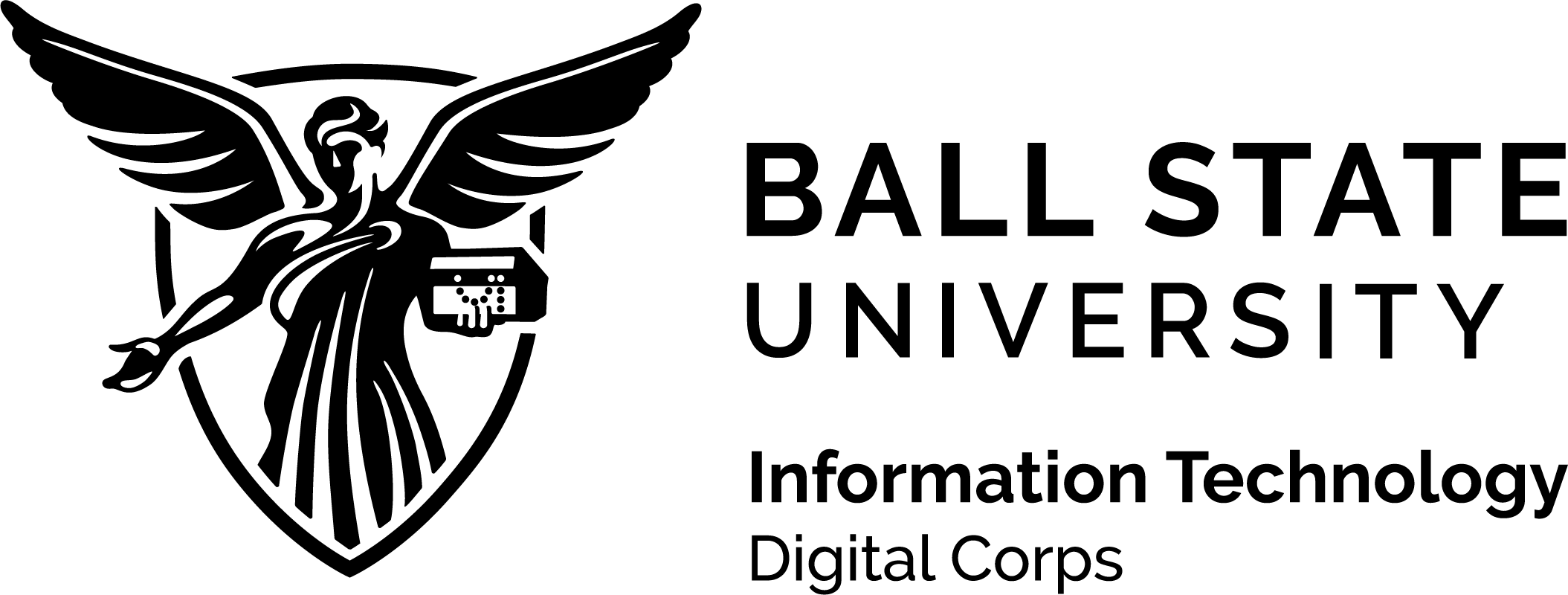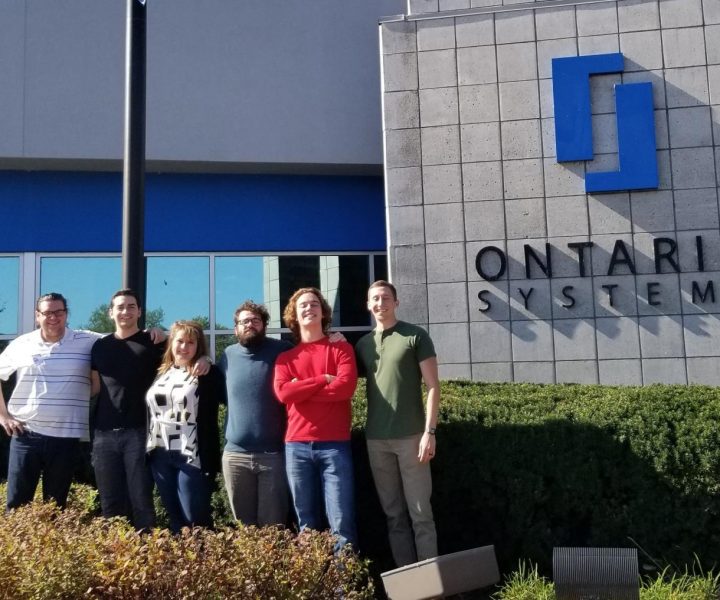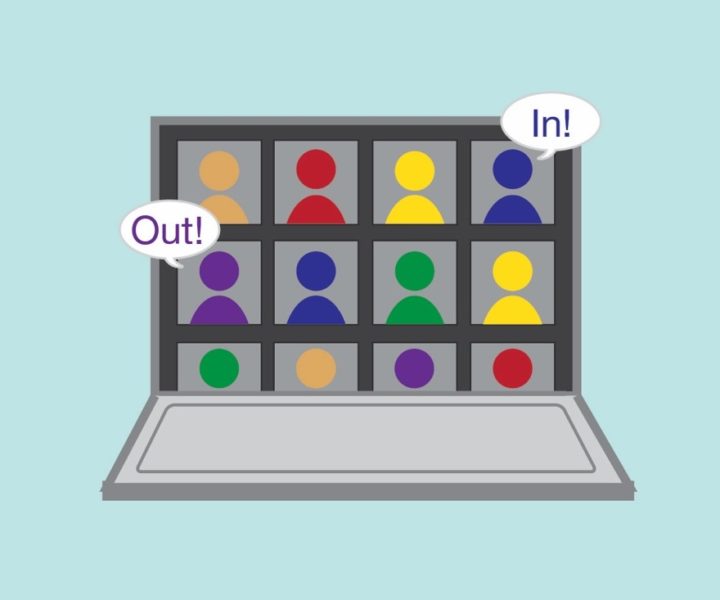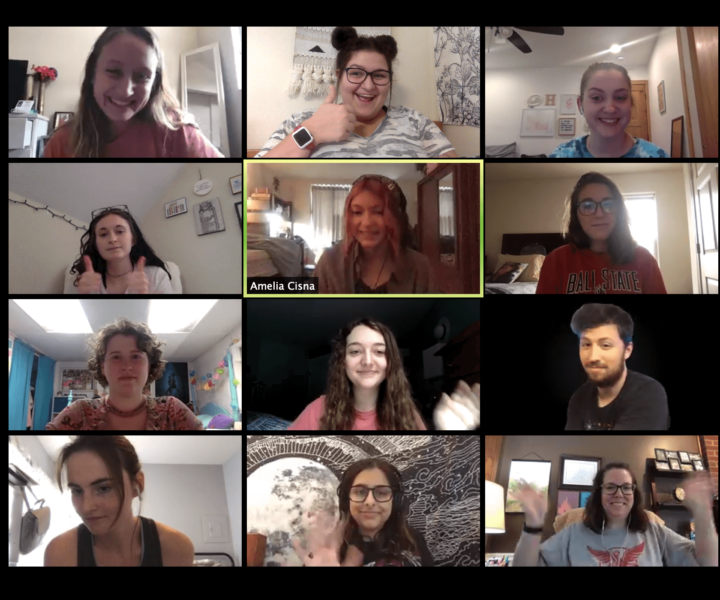During undergrad, I walked past the Digital Corps office frequently, gazing through the wide windows at the students chatting and collaborating near each other. On the far side of the office, I remember seeing the days of the week written on a white board, except “Friday” was written as “Friyay,” and I found that detail to be so fun. Needless to say, I was elated when I was hired as the Digital Corps’ new Communication Team Graduate Assistant in late May 2020.
At that time, we had so many unknowns concerning COVID-19. According to The New York Times, by the end of May, Indiana had an average of nearly 500 new cases a day, so I had doubts about my Digital Corps experience looking anything close to normal.
Sure enough, at the end of August, during the first week, I sat in the Digital Corps office for eight hours and saw my Communication Team members only briefly on Zoom. During the second week, I held our first Communication Team meeting, and as each of my team members introduced themselves, I stared at their digital faces, a little blurry and glitchy, and wondered how I would cultivate close, working relationships with them during remote work.
I wasn’t entirely alone in this experience. In fall and spring, the Corps hired a total of 13 undergraduate students whose experiences—the challenges, the growths, and everything in between—mirror mine. According to Buffer’s “2021 State of Remote Work” report, 46% of employees said their companies would permanently offer remote work, and 38% weren’t certain of their companies’ stances. With this trend, many more employees will need to adapt to a new job at a distance and may never see their boss in person, like the Corps new hires this school year.
Running into Roadblocks
During their first semester at the Corps, undergraduate new hires work on training, to ease them into the Corps and prepare them for project work, but they soon ran into roadblocks. They needed to adjust to learning and completing their training online as opposed to previous new hires who could work more closely and in-person with their team leads. Design Apprentice and fall new hire Mackenzie Lyseng recalls struggling to learn CSS and HTML online, but she reminded herself that she had two other Design new hires she could talk to. Many new hires had other new hires on their teams, which helped them feel more comfortable at the Corps.

The Video Team has adjusted its production process because of COVID-19 restrictions, which includes quarantining their equipment for multiple days. Students spend less time in the office, so Video Apprentice and fall new hire Jacob Newlin said, “Training was kind of difficult because on the Video Team we do a lot of hands-on stuff, and there’s very limited hands-on availability for us this semester.” The Video new hires struggled to shoot video interviews of Corps students for their training because they needed to find people, time, and space. They also worked under tight shooting deadlines because all Ball State students were fully remote after Thanksgiving. Although challenging, Video new hires learned to communicate and organize their schedules under difficult circumstances.
Mastering Slack Messages and Video Calls
Before COVID-19, the Corps had an open office plan where students could sit wherever they wanted, making it easy to talk to students and staff. Now, undergraduate students work in the office five hours a week at assigned, socially distanced seats and work the rest of their hours remotely. New hires see their coworkers much less than they would in “normal” times, so they have struggled to communicate and get to know their coworkers.

While learning the ropes, new hires asked questions through Slack messages rather than asking them directly in person. Development Apprentice and fall new hire Joah De Vries said, “I found that, especially during training, when I was stuck on something, asking for help through Slack, trying to word my messages and seem proper, felt a lot harder than going up to someone in-person and asking… Not communicating in person is definitely a lot more difficult than I was expecting it to be.” De Vries is not alone. According to Buffer’s report, 16% of remote workers said their biggest struggle was difficulty with collaboration and communication. Messaging adds an additional step to the question asking process since new hires need to decide how to phrase the question. Plus, these conversations often take much longer than they would in person with the conversation casually bouncing back and forth until an understanding was reached.
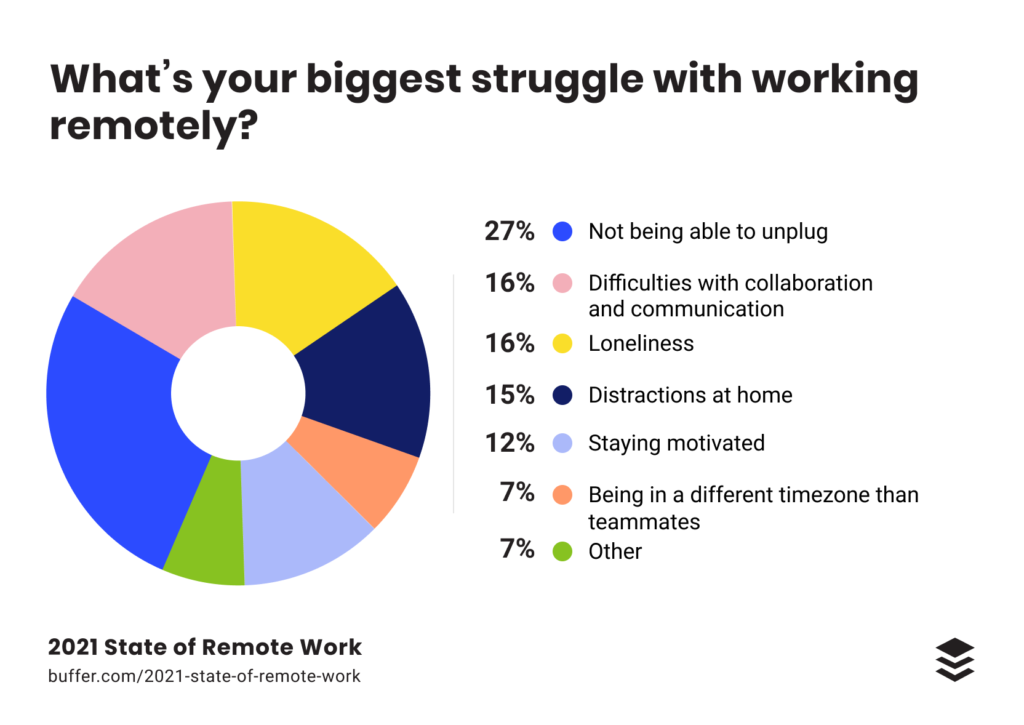

New hires also struggled to meet people, feeling like they were missing out on the usual fun office culture. Buffer’s report shows that loneliness is a main struggle for remote workers. Despite the struggles, new hires were pleased by how eager many students were to reach out and help them adjust. “I was so worried about how I was going to balance everything. So just having people around me who have been doing this for a long time and have been telling me what they do has really helped me,” said Video Apprentice and fall new hire Cami Beteet.
De Vries also shares similar thoughts as Beteet. He recalls that Development Apprentice Dan Chepkwony was one of the first students to reach out to him, and the two soon chatted on a Slack call. Small gestures, such as this, can positively impact new hires’ experiences.
New hires discovered other unique ways to meet with coworkers. During training, they were required to interview and meet students outside of their teams, so this helped them meet people they didn’t regularly see in Zoom meetings. They also enjoyed interacting with the fun Slack channels, such as #social-shenanigans where the Remote Socialization Project Team posts weekly prompts.
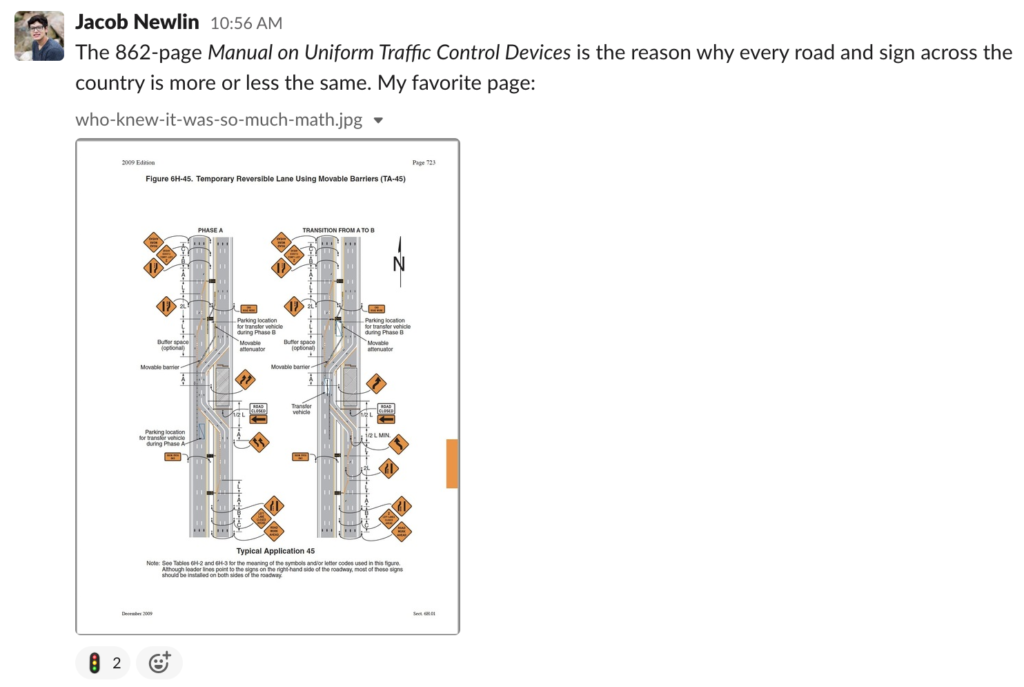
Getting into the Thick of It

During their semester of training, undergraduate new hires still attended some meetings. Design Apprentice and spring new hire Bailey Bourdon said, “I really appreciate all the meetings they do to help us feel a little more comfortable with the people that we’re going to be working with because we don’t see them otherwise.” In a normal year, these meeting would be an important aspect of Corps acclimation, but now they are crucial in helping new hires meet their coworkers and feel like they are a part of the Corps.
Meetings include All-Corps meetings with everyone at the Corps, team meetings, Soft Skills sessions, check-ins with their team lead and buddies (Corps mentors), and onboarding meetings. At onboarding meetings, undergraduate new hires gathered on Zoom with Charity, the masters, and a staff member to get to know each other better and feel more comfortable at the Corps. They did activities, such as trivia about each other and Corps Jeopardy, so they were able to “get to know each other a little bit more as people,” as Beteet explained.
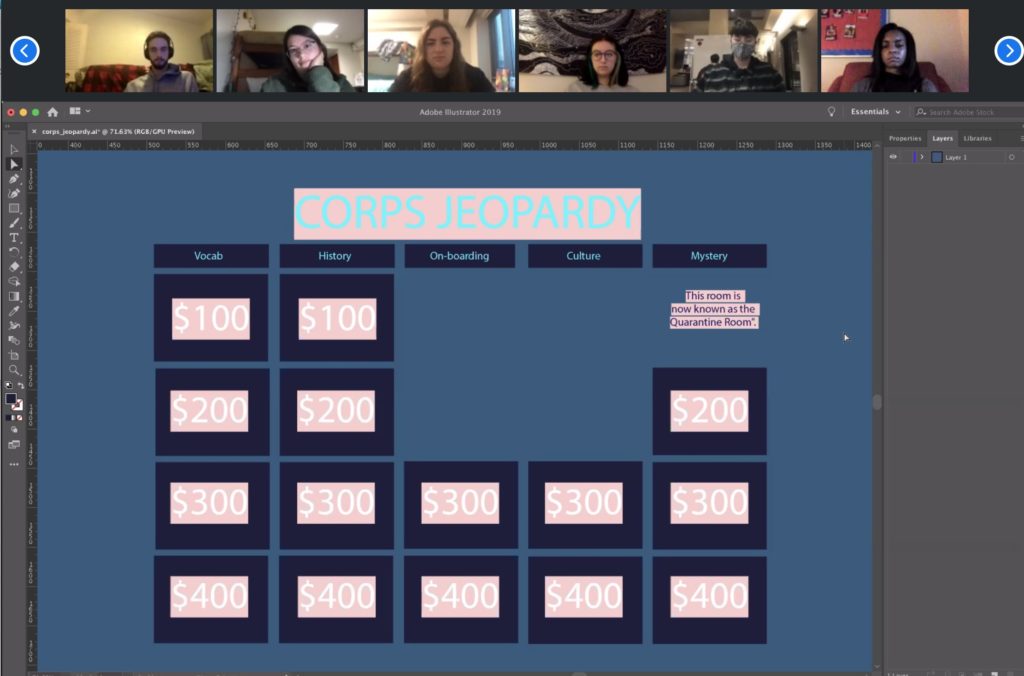
The fall new hires completed their training in December and began working on projects with the rest of the Corps in January. They were excited to make the transition to projects because they have more responsibility and can put their training to practical use. They have found projects intimidating at times since they barely know their coworkers. “I get nervous when I have a meeting with somebody I’ve never talked to before. Everyone’s really nice, so it, of course, wasn’t a problem in the end, but I was kind of nervous. I feel like I kind of know you because I’ve seen your face. But I don’t really know these people. It’s a good experience to work together on stuff,” said Newlin.
Corps students and staff have used their welcoming culture to mitigate the awkwardness that new hires feel when working with unfamiliar faces. On the bright side, new hires already feel more competent with their work since they are demonstrating industry practices and applying their skills.
Moving Forward
Despite how odd this experience had been, the new hires are grateful for the opportunity to work at the Corps. Lyseng said, “Especially for a college job, you don’t think you could ever find an on-campus job in something close enough to your major. It was a really, really awesome thing to find this design position on campus.” New hires mainly hope to gain collaboration experience and work in a creative agency environment, experiences that will leverage them above their peers upon graduation.
While less important for their future, they hope to work in the Corps office more regularly where they can meet people and collaborate easier, experiencing the Corps’ culture. New hires also think they will feel strange if they ever work in the office more regularly since they only have semi-remote work experience at the Corps. “I think it’ll be strange when things go back to normal because I’m getting used to how it is right now, but everyone else that I’ve talked to that worked here before this happened are saying this is just really weird for them,” said Bourdon.
I share similar thoughts as Bourdon. I sometimes imagine myself walking into the office, post-COVID with no seating chart. Where would I even sit? I also wonder how I would feel hosting our team meetings in the conference room as opposed to Zoom. I have only experienced the Corps through an assigned, distance seat and Zoom meetings.
While this has been a challenging experience, I, along with the other new hires, have grown as we have learned the Corps ropes at a distance. Perhaps, we are more prepared for work post-graduation with the upward trend in remote work because we were immersed in remote work from the beginning of our positions. Plus, we were challenged in different ways than we would have been otherwise.
